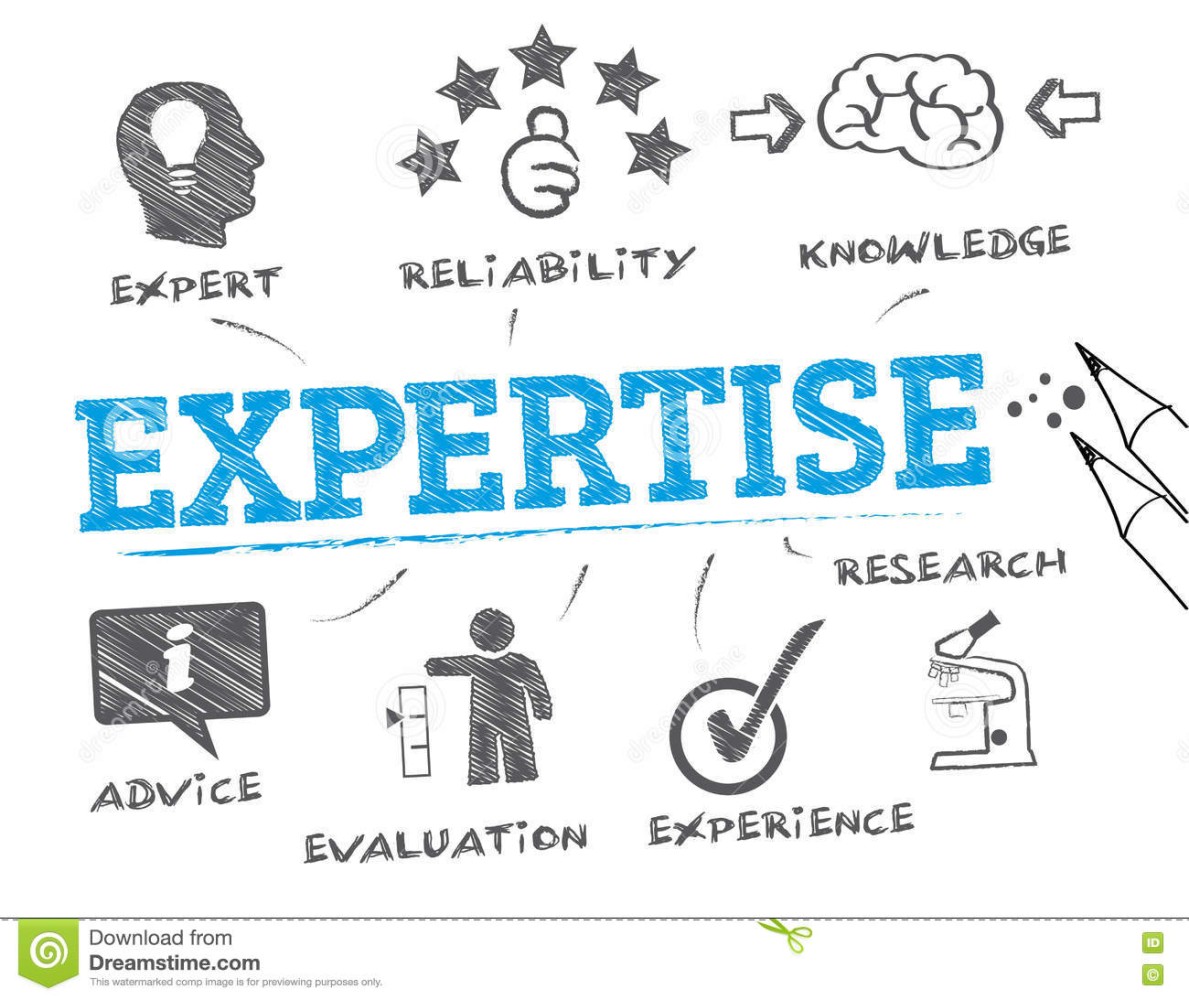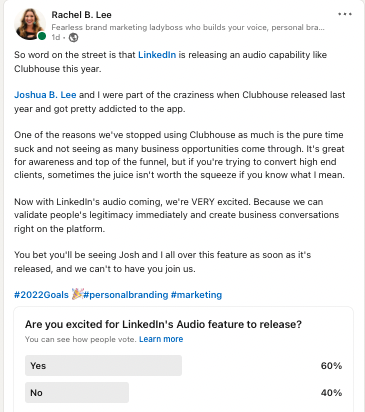
You’ve probably heard that term ‘thought leadership’ quite a bit and thought, what the heck does that mean?
Or what is the difference between being a thought leader and an influencer?
Let’s break it down.
What is Thought Leadership Content
Well first things first, thought leadership content according to HubSpot is:
Thought leadership is a tactic content marketers use to build credibility for themselves or leaders in their company. The main goal of thought leadership is to become recognized as an expert and used as a go-to resource in your field. To become a thought leader, one might create and promote educational, helpful content and become active in the industry community, particularly on social sites.
The big idea with thought leadership content is that you’re educating people around a topic that you have trust, credibility and deep experience in. That doesn’t mean we’re selling or being promotional. We are giving information freely to serve others so that they can learn from your successes and failures and ultimately deepen your relationship with them.
To be a thought leader is to be a giver. It’s having deep knowledge that can support others in their journey. And in today’s world, being a thought leader means you’re also a content creator.
Why does thought leadership content matter?
The reason why thought leadership is a prerequisite [for gaining a competitive advantage] is because trust is a prerequisite, and thought leadership is a way to build trust
As Joe Chernov said in ‘The Sophisticated Marketer’s Guide to Thought Leadership.’
In the digital revolution dominated by social media, it’s critical that business leaders and experts have a distinct position and viewpoint in the market not only to differentiate their brand, but to humanize it. Because people want to hear from other people. We’re tired of being talked at and want to be talked to. We want to build a relationship with a company beyond the transaction and that happens through brand humanization and thought leaders.
In 2018 LinkedIn partnered with Edelman to learn from 1,200 North American and European decision makers, marketers and sales professionals.
The bottom line: Buyers often value thought leadership much more than the creators of it. Here are some of the key findings of the Edelman-LinkedIn research ,and I predict it would be way higher in our remote work, COVID world:
- 58% of respondents read one or more hours of thought leadership content per week.
- 55% said they use thought leadership to vet organizations they may hire.
- 47% of C-suite executives said they have shared their contact information after reading thought leadership
- 60% of business decision makers said that thought leadership directly led to their awarding of business to an organization. Just 26% of sellers believe that thought leadership can lead directly to closed-won deals.
- 60% of C-suite executives said they were more willing to pay a premium to companies that create thought leadership with a clear vision. Only 14% of sellers believe their thought leadership content creates pricing power.
- 60% of decision makers said thought leadership convinced them to buy a product or service they were not previously considering
So basically, thought leadership content is really important to building awareness and trust, gaining a competitive advantage, and generating revenue. It should be a part of the entire buying journey, educating people no matter where they’re at and building long term relationships that convert over time.
How to create thought leadership content?
Being a thought leader is not an easy task. Here’s where to start:
1. Identify your expertise
What industry expertise do you have with real evidence that you know what you’re talking about?

Your content goes here. Edit or remove this text inline or in the module Content settings. You can also styleYou need validation such as big companies you’ve worked at, books you’ve written, awards you’ve won, publications you’re featured in, places you’ve spoken at and more. This is essential to building your credibility and creating trust with others. There are a lot of people that say they’re ‘a best selling author’ and then you look them up on Google and there’s nothing. You can’t be a thought leader without some external validation and credibility in the market. every aspect of this content in the module Design settings and even apply custom CSS to this text in the module Advanced settings.
A great example is Marie Forleo. She’s a life coach, speaker, author, and host of her own YouTube channel show, MarieTV. She is known for creating and selling online courses, creating great content and became a thought leader because of her expertise in business coaching. It’s clear what her expertise is and she’s done an incredible job educating and inspiring her audience through educational content.
2. Define your audience
Who relates to your background and experience? Who needs the knowledge you have?
Let’s say you’re a marketing ladyboss for 20+ years in corporate – you’re probably going to produce thought leadership content all around corporate marketing strategy, consumer research and trends, digital planning and execution tips, and more to support business and marketing leaders and professionals. You want to educate people who are similar to you as well as those looking to learn more about marketing and may be novices. You always want to be talking to someone, giving them valuable information and takeaways.
3. Research pain points and what your audience wants to learn
How can you solve their pain points and bring value simply?
You have amazing knowledge and people trust you, so now you need to figure out what you should be talking about. This is where LinkedIn polls become a fun tool to get a quick pulse on what your audience is interested in. You can do competitive research, Google keyword research, and hashtag research to get a feel for search volume and interests. I love looking at social media comments or listening to questions at a speaking event to understand what people are asking. Using questions and comments as a resource to create content ensures that I’m creating content people in fact want to know about.

Ex. Here’s a poll I did this week to get a feel on people’s excitement for LinkedIn audio. Since I was an early adopter of Clubhouse and understand how to captivate an audience on audio, I’m really interested to know if my LinkedIn audience is excited for this and will be interested to check it out when it’s released. Plus some people in the comments had no idea it was coming which means I get to produce content to educate!
Ex. Here’s a poll I did this week to get a feel on people’s excitement for LinkedIn audio. Since I was an early adopter of Clubhouse and understand how to captivate an audience on audio, I’m really interested to know if my LinkedIn audience is excited for this and will be interested to check it out when it’s released. Plus some people in the comments had no idea it was coming which means I get to produce content to educate!
Remember, you don’t need to look extra smart and use big fancy words. Your goal is to share your expertise simply and bring value to people similar to you and people eager to learn from your experiences.
4. Create content consistently and frequently that showcases your expertise
Now you get to put yourself out there and show what makes you a thought leader so people want to follow you. So that means that you stick to what you have expertise in based off of step 1 and create content around that topic often. I believe LinkedIn is the most powerful place to build your thought leadership and grow your expertise.
I suggest creating polls (like above), text, and graphic posts to start and get yourself into the algorithm at least 3x per week. Look at hashtags you want to be associated with based on your expertise and make sure you’re creating content associated with those hashtags every time. And yes, it’s important to diversify your content distribution as a thought leader so that may mean creating blogs for your website and posting on Instagram weekly to help get your name out there in new ways and with new audiences. What matters is that you get out there with great content! EDUCATE, INSPIRE and DRAW PEOPLE IN through your story, your background, your legitimacy and never sell.
5. Be authentically you and be in service
Not everyone is a thought leader…and that’s perfectly okay. Everyone can be a content creator but that doesn’t mean they’re a thought leader. Being a thought leader means that you have validated experience and have an ability to communicate that information simply and creatively so that an audience wants to hear. This takes time! It’s a delicate and diligent process to create a voice, stand for something, and want to share your knowledge with the world in service to others – NOT to monetize them.
Know this, the more authentic you are and the more you care about people and genuinely want to support them, the more you’ll become a true thought leader.
Let me know what you think about creating a thought leadership content strategy in the COMMENTS!

Don’t miss our first community call!
Our plan here at Standout Authority is to help you find your voice, create a personal brand and become a thought leader with influence. We get you noticed quickly on LinkedIn so people start coming to you. Throughout this year, Joshua B. Lee and I will show you all the ways we’re supporting executives, entrepreneurs and top leaders across the world at Fortune 500 companies.
That’s why we’re so excited for you to join us on our first Community Call of the new year where we’re discussing our exciting predictions for 2022 AND announcing something we’ve created just for you.
Here’s just a taste of what we’re going to cover:
– What social platform will dominate the landscape in 2022?
– What is the creator economy and where is it going this year?
– Will LinkedIn keep their momentum for creators, thought leaders and brands?
– How will you drive brand and demand in new fresh ways?
And a whole lot more. See you on January 18, 2022 10:30amCST.
